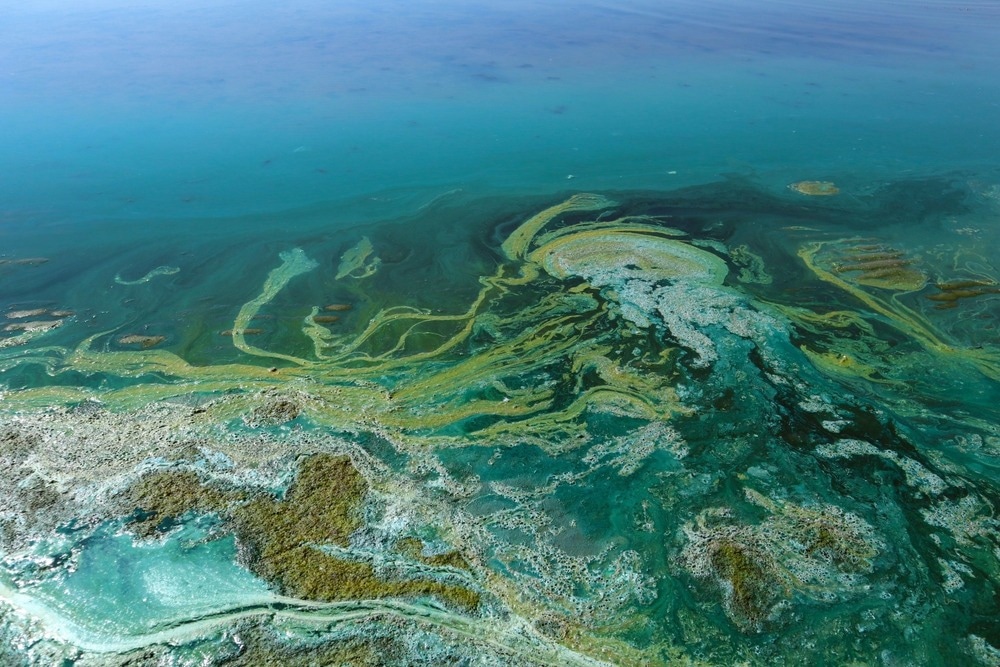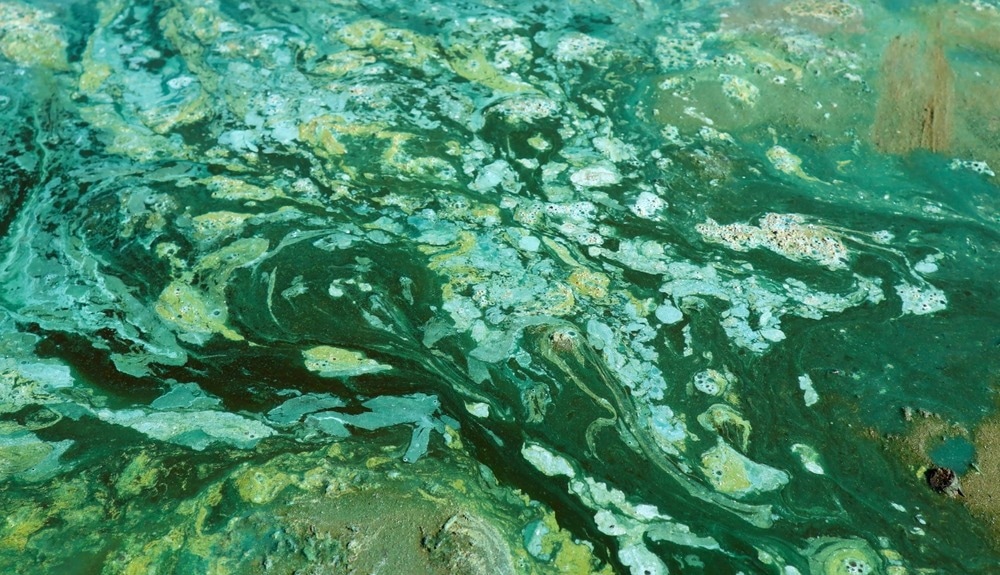Considering the harmful effects of toxic algae, all coastal European countries conduct regular monitoring programs for toxic marine algae. The prevalence of harmful algal blooms (HABs) has increased due to rapid climate change and northward migration of tropical toxic algal species. It is crucial to detect these algae before they bloom. Different types of biosensors have played crucial roles in the early and rapid detection of toxic algae.

Image Credit: mivod/Shutterstock.com
Why is it Important to Detect Toxic Algae?
The ocean and freshwater harbor a diverse range of phytoplankton species that include algae and cyanobacteria. These organisms are extremely important for aquatic ecosystems, particularly for supplying food and oxygen to other aquatic species. Algal bloom occurs when favorable nutrients from agriculture, industry, and domestic settings reach the ocean or freshwater. It also depends on coastal development, eutrophication, temperature, and water column structure. A rapid increase in algal bloom has raised concern because some algal species produce toxins that adversely affect aquatic organisms and humans.
HAB produces a number of toxins that include neurotoxins, which could be introduced to humans by ingestion of contaminated seafood, fish, or water. Humans exposed to HAB develop respiratory illness, digestive tract problems, memory loss, skin irritation, lesions, and seizures. Sometimes, a high exposure to HAB can even cause mortality.
Some common algal species that produce toxins are Gambierdicus, Prorocentrum lima, Coolia, and Ostreopsis. Ciguatoxins (CTXs) are secreted by Gambierdiscus, which has been associated with seafood-borne illness ciguatera. When humans are exposed to this toxin, they develop neurological, gastrointestinal, and cardiovascular symptoms.
In 2003, Gambierdiscus sp. was first detected in Crete as a potential producer of ciguatoxin in Europe. In 2009, a surveillance system called SVEICC (Sistema de Vigilancia Epidemiológica de la Intoxicación por Ciguatera en Canarias) was implemented by health authorities to monitor ciguatera symptoms. Palytoxins (PTXs) constitute another toxin that causes fatalities in humans. PTXs are produced by genus Palythoa, Ostreopsis siamensis, and Trichodesmium. Ostreopsis blooms have been reported in Greece, France, Italy, Spain, and Croatia. Microcystin (MC) is another toxin produced by HABs.
How Are Toxic Algae Detected?
Conventionally, HABs are detected using light microscopy; however, this method is not accurate. Alternatively, chromatographic techniques are used to detect HAB toxins. These methods are also not favorable for the early detection of algal bloom. Several molecular methods that include DNA microarrays methods, polymerase chain reaction (PCR)-based assays, fluorescent in situ hybridization (FISH) of whole-cell, monoclonal antibody probes, sandwich hybridization assays, and enzyme-linked immunosorbent assay (ELISA) have been developed for rapid and accurate detection of toxic algae. This article focuses on the biosensors used to detect toxic algae.
The key working principle of biosensors is associated with identifying a target biochemical component, such as antibodies, toxins, enzymes, or specific probe sequence, present in a sample. After identifying the target biomolecule, transducers convert them into a quantifiable signal. Therefore, biosensors can detect and quantify targeted biomolecules.
Compared to traditional methods, biosensors can detect and quantify toxic algae more rapidly and accurately. Furthermore, biosensors are user-friendly, cost-effective, require low power for operation, highly sensitive, and versatile. Portable, miniaturized biosensors can be used in the field, which improves monitoring capacity.

Image Credit: mivod/Shutterstock.com
Biosensors for the Detection of Toxic Algae
Different types of biosensors, such as calorimetric, piezoelectric, optical, piezoelectric, and electrochemical, are used to detect contaminants. Among these, optical and electrochemical biosensors are most commonly used to detect HABs for their operational ease, high sensitivity, real-time assessment, and label-free detection approach. Another advantage of these biosensors is that they can identify pathogenic nucleic acids from complex samples without requiring target purification and amplification.
Electrochemical Biosensor:
The key principle behind electrochemical biosensors is a chemical reaction between the immobilized biocomponents and analyte that generates or consumes electrons or ions, and changes the measurable electrical properties of the reactants.
The electrochemical DNA biosensor could be used in the HAB monitoring program. This biosensor has two detection methods, namely, Rapid PCR-Detection and Hybrid PCR-Detection. Recently, an 8-plex assay multi-target detection method has been formulated based on these two detection methods, which can determine dinoflagellate Karenia brevis and Alexandrium ostenfeldii in coastal waters. The portable nature of this biosensor enabled early detection of harmful algae before algal bloom.
A semi-automated rRNA biosensor has been designed based on a sandwich hybridization assay for the in situ detection of HAB. This biosensor identifies an organism using specific capture and signal probes specific to an HAB. Another semi-automated device, known as ALGADEC, can identify harmful algae. Owing to their high sensitivity and specificity, electrochemical immunosensors based on carbon electrodes can detect as low as 1 cell of A. minutum (harmful alga).
Optical Biosensors:
The main principle behind this biosensor is the optical characteristics (e.g., chemiluminescence, bioluminescence, fluorescence, UV-vis absorption, and reflectance) induced due to the reaction between biomolecule compounds and analytes. The biosensors are flexible, resistant to electrical noise, and compact. Alexandrium species are accurately detected based on an optical technique, known as SPIRIT+, which utilizes peptide nucleic acid (PNA) probes and portable surface plasmon resonance (SPR) biosensing equipment.
Nanomaterial-based Biosensors:
Nanomaterials are extremely small particles with multiple unique features. The incorporation of nanomaterials in biosensors enables rapid and high-throughput detection. An electrochemical immunosensor modified with gold nanoparticles (AuNPs) and functionalized with specific nanobodies significantly enhanced sensitivity for the detection of A. minutum. A DNA-based optical biosensor has been designed using graphene oxide nanosheets to detect Heterosigma akashiwo, a toxic alga. Nanomaterials-based DNA biosensors have the potential to detect multiple toxic algal species.
Current Outlook
Florida faces problems of blue-green algal bloom that produces harmful toxins, such as MCs. Algal bloom in Florida has been attributed to its warm temperatures, stagnant water bodies, and excess nutrients. Humans exposed to MCs experience sore throat, abdominal pain, and gastrointestinal distress. Microcystin-LR (MC-LR) is the most harmful type of toxin that has been detected in freshwater.
Recently, a group of scientists at the University of Central Florida have developed an MC-detecting biosensor that is a portable, sensitive, and cost-effective device. This biosensor can detect MC-LR in the early phase of being introduced in a water body. At present, scientists are working on this biosensor to make it more efficient for HAB detection.
References and Future Reading
UCF Students Receive $25,000 EPA Grant to Develop Toxin Biosensor for Drinking Water. (2023) [Online] Available at: https://www.azosensors.com/news.aspx?newsID=15594
Jason, J. et al. (2022) Harmful Microalgae Detection: Biosensors versus Some Conventional Methods. Sensors, 22(9), 3144. doi.org/10.3390/s22093144
Stoll, S. et al. (2022) Cost-effective screen-printed carbon electrode biosensors for rapid detection of Microcystin-LR in surface waters for early warning of harmful algal blooms. Research Square. Available at: https://orcid.org/0000-0002-5298-2371
Bertani, P. & Lu, W. (2021). Cyanobacterial toxin biosensors for environmental monitoring and protection. Medicine in Novel Technology and Devices, 10, p.100059. doi.org/10.1016/j.medntd.2021.100059
Medlin, L. K. et al. (2020) Advances in the Detection of Toxic Algae Using Electrochemical Biosensors. Biosensors, 10(12), p.207. doi.org/10.3390/bios10120207
Bickman, R.S. et al. (2018) An Innovative Portable Biosensor System for the Rapid Detection of Freshwater Cyanobacterial Algal Bloom Toxins. Environmental Science and Technology. 52(20), pp.11691–11698. doi.org/10.1021/acs.est.8b02769
McPartlin, D. A. et al. (2017) Biosensors for the monitoring of harmful algal blooms. Current Opinion in Biotechnology, 45, pp.164-169. doi.org/10.1016/j.copbio.2017.02.018
Disclaimer: The views expressed here are those of the author expressed in their private capacity and do not necessarily represent the views of AZoM.com Limited T/A AZoNetwork the owner and operator of this website. This disclaimer forms part of the Terms and conditions of use of this website.